Bryson DeChambeau: Is this student golf's newest trendsetter?
- Published
- comments
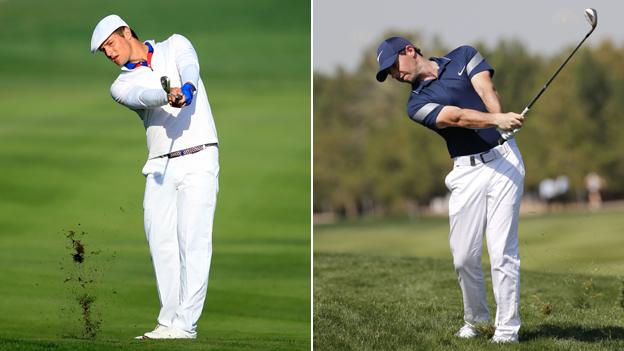
The 'golfing scientist' Bryson DeChambeau has a more upright swing than Rory McIlroy because all his clubs are the same length
An intrigued Rory McIlroy peered into the bag of a potential rival for the Abu Dhabi title last week and marvelled at the unique set of clubs.
The four times major champion wasn't alone - other big names, including Ernie Els, peppered the clubs' owner with questions. Never mind that Bryson DeChambeau is more than half Els' age, the big South African wanted to learn from the young amateur.
In a golfing world of uniformity and convention, DeChambeau brings an approach to the swing and equipment that is unique in the modern game.
Furthermore, it seems to work. The 22-year-old is the reigning US amateur champion, becoming only the fifth man to land that prestigious title and the National Collegiate Athletic Association (NCAA) individual crown in the same year.
Competing against pros, he was runner-up to Peter Senior at last year's Australian Masters. Last week DeChambeau was the first-round leader after an opening 64 in Abu Dhabi, where he eventually finished in a share of 54th place.
The Californian says he is doing a form of internship before turning pro once he has competed at the Masters in April. He will be one of the most talked-about players in the Augusta field.
DeChambeau calls himself "a golfing scientist". He is a physics major and has evolved a game that hinges around those unique irons that so fascinated McIlroy when they played together in the third round last week.
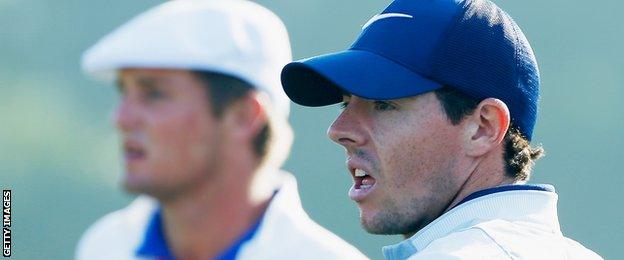
World number three Rory McIlroy was intrigued by DeChambeau's unique set of clubs
Throughout the bag, each iron is 37 and a half inches long, whether it is a three-iron or a wedge. He wields them with the same upright swing, wrapping his palms around chunky grips rather than using his fingers to hold the club.
"They're all the same length," DeChambeau told BBC Sport. "Same lie angle, same shaft, just different loft. Same bounce configuration as well on each and every one of them.
"But it's four degrees of loft difference between them and it works pretty well. It helps me keep my same posture, same set-up, same everything, and allows me to perform quite nicely with my irons."
The idea came from a book called 'The Golfing Machine', self-published by Homer Kelly, a Seattle aircraft mechanic, in 1969.
Californian golf instructor Mike Schy came across the book and was intrigued by Kelly's theory surrounding "geometric oriental linear force" and the impact it could have on a golf ball.
It also appealed to the scientist in DeChambeau.
"He's steadfast," the player's mother Jan told Golf Digest magazine. "Once something is proved to him, he stands his ground."
That determined streak comes from his father John, who was once one of northern California's top amateur golfers.
The younger DeChambeau collaborated with his coach to refine the Golfing Machine to suit his game.
"We thought there has to be a better way to play golf," he told me.
"It's a long story, but to keep it short I pretty much chose this variation of the golfing machine where it allowed me to swing on the same plane.
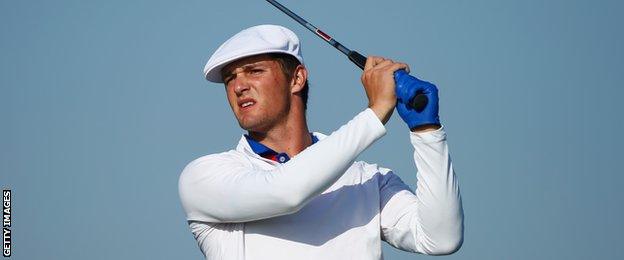
Bryson DeChambeau's inspiration to build his own clubs came from a book he read entitled 'The Golfing Machine'
"And when I did that, I realised I couldn't do it with a wedge and a three iron because it would mean changing body motions. That doesn't make sense, so I said why don't we make them all the same lie and angle and the same length?
"And my coach said 'that's an easy question to ask and a tough one to answer.' So we went on this journey and it's been a great process and a great learning experience for me."
Although DeChambeau faded from contention during the final two rounds in the Middle East, his talent and technique still made a big impression.
"I think he is a really good player and he will blossom and get better," BBC Radio 5 live golf summariser Jay Townsend said. The former European Tour player was speaking after following DeChambeau in his role as an on-course television commentator in Abu Dhabi.
Townsend told BBC Sport: "I think he has a wonderful technique. He has beautiful movement through the ball. You can see that he can play a lot of different shots."
Like most observers Townsend is curious about DeChambeau's club configuration.
"They all have to have the same swing weight, so then the three iron has to weigh more than a normal three iron and then a wedge has to have less mass in the clubhead," he said.
"Then, when you get into the feel shots and the shots out of the rough around the greens you don't have the mass to go through the rough that you really need to play those soft shots.
"Everything is a trade-off in golf. You can't have it all one way, but this is an interesting concept and I'm going to be thinking about it a lot in the next few months.
"I think it has some merit. I'm not sure if I wouldn't make some little tweaks to it, but it's pretty cool.
"No-one is saying he is crazy and there is definitely merit to what he is doing. The theory behind it is very good."
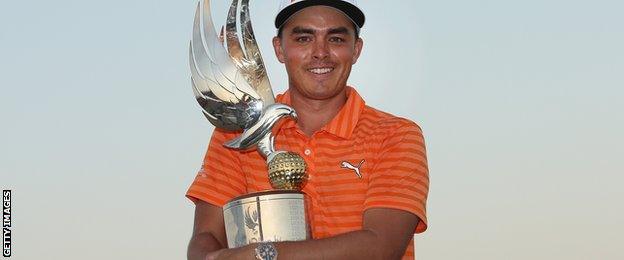
Rickie Fowler scored 68 in the final round to win the Abu Dhabi Championship on 16 under par
Certainly, given DeChambeau's progress, he has every chance of satisfying his ambition of becoming a trendsetter for the game. He will soon turn professional and there is surely scope for him to create his own range of clubs.
"Amateurs at home will try anything to try to buy a better game," Townsend dryly observed.
It was quite a week for trendsetting in the desert. The European Tour are now allowing their players to wear shorts in practice and pro-ams and Abu Dhabi champion Rickie Fowler's "high-top" golf shoes brought a new look to the course.
Fashions come and go, but a more substantial question surrounds whether DeChambeau has arrived upon a new and lasting way to play the game.
- Published24 January 2016
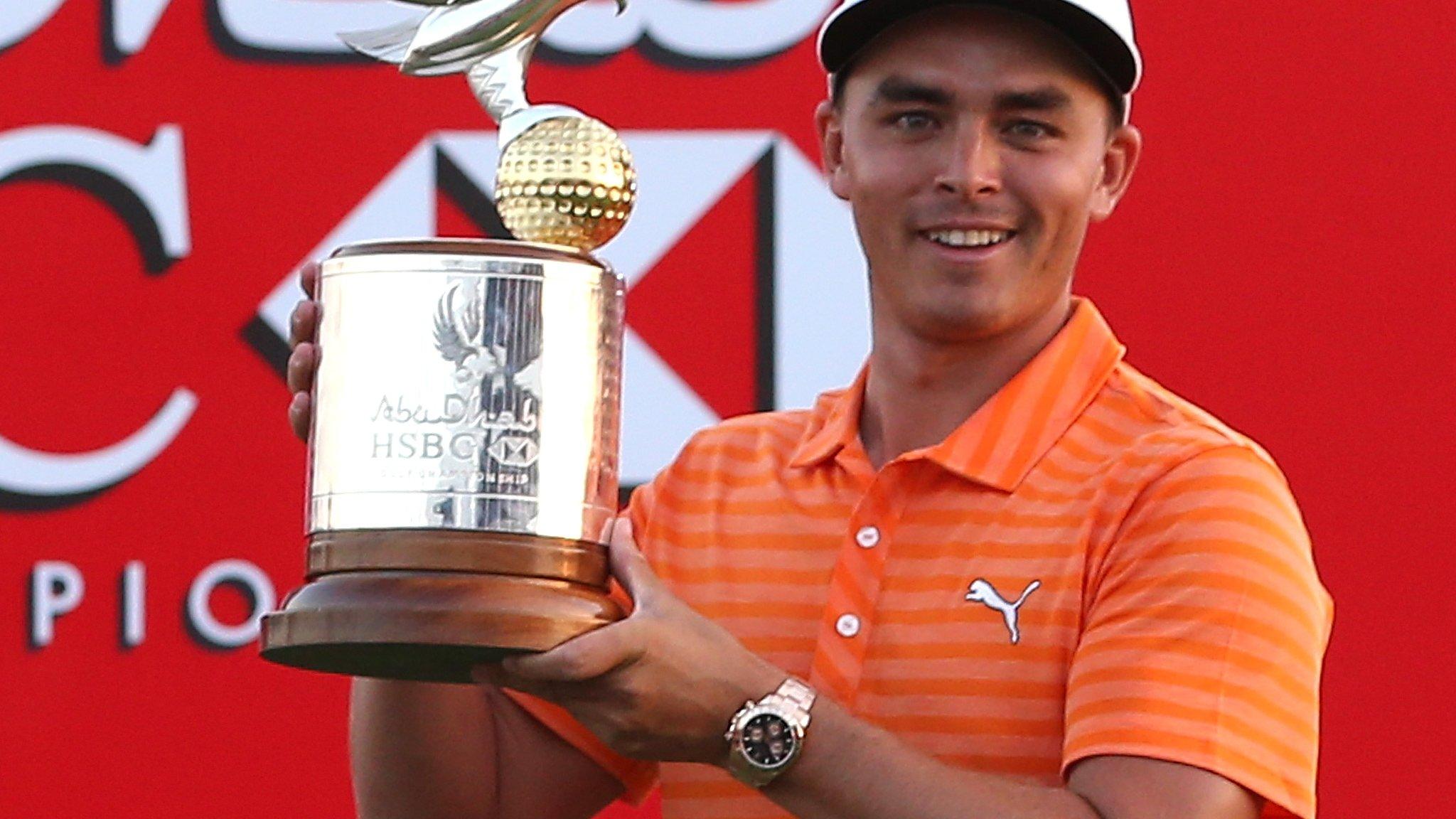
- Published25 January 2016
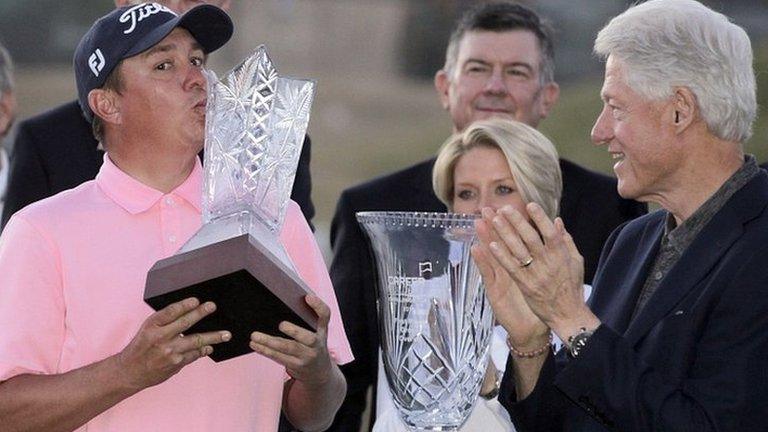
- Published20 January 2016
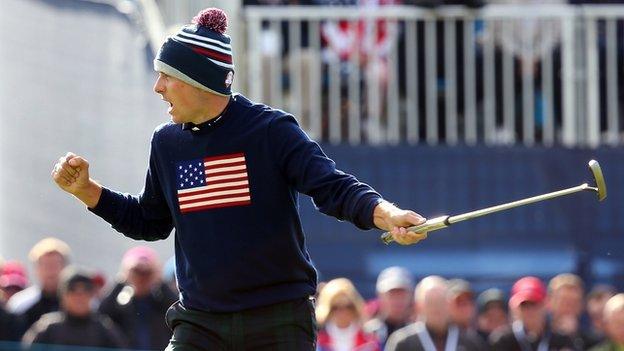
- Published28 September 2018
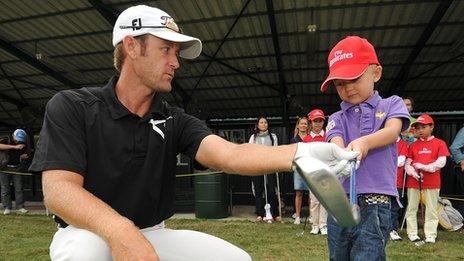
- Published19 July 2016
